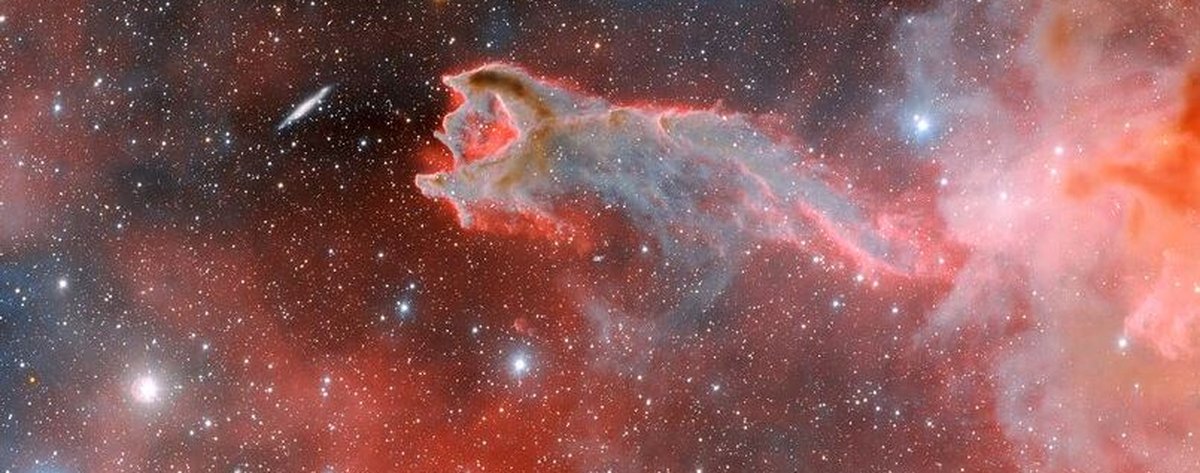Recently the Dark Energy Camera (DECam) team It captured a mysterious cosmic object lying between the Milky Way and a spiral galaxy far from Earth, nicknamed the ‘Hand of God’ for its strange appearance. When looking at the image more closely, it is possible to see that the photo represents ‘a ghost hand trying to reach a cosmic object at the edges of the universe’.
The Dark Energy Camera is a project located at the Víctor M. Blanco Telescope in Chile and developed by NSF NOIRLab, the US government’s research center. The ‘Hand of God’, also known simply as CG 4, is a nebula, comet globule-type structure. Unfortunately, scientists have not yet discovered the reason behind this strange structure.
Located about 1,300 light-years from Earth in the constellation Puppis, CG 4 is just one of thousands of comet globules scattered throughout the Milky Way. Also known as shit globules, these comet globules consist of clouds of cosmic gas and dust surrounded by hot ionized material; It is a subclass of dark nebulae.
As can be seen in the photo, the removal of material usually found in the cloud creates an elongated tail. Despite their resemblance to comets, cosmic objects have nothing in common.
“It’s still unclear how these hard-to-detect clouds achieve their distinctive structure, but astronomers think it’s a result of the hot, massive stars surrounding them… This obscure, ominous structure is CG 4, a comet globule,” CG 4, “It is one of many comet globules found in the Milky Way, and how these objects acquire their distinctive shapes is still a matter of debate among astronomers,” NOIRLab explains.
Dark Energy Camera and the ‘Hand of God’
Comet globules were first identified in 1976 when astronomers used the Schmidt Telescope in Australia, United Kingdom, to observe the phenomenon. Similar structures have been found throughout the Milky Way, but the vast majority are located in the Gum Nebula in the southern constellations Puppis and Vela.
one of the mechanisms The reason these objects can resemble comets is because they formed in spherical nebulae.However, a nearby supernova explosion may have caused the Gum Nebula to appear and create its mysterious appearance. The second idea scientists propose is that comet spherules may have formed from stellar winds and pressure from large, hot stars in the area.
Also read: Cosmic Halloween and the 10 scariest nebulae in the Universe; To look!
“Also seen in this image is CG 4 about to engulf the spiral galaxy ESO 257-19 (PGC 21338), which appears to be helplessly settled in front of it. But in reality this galaxy numbers more than a hundred million. NOIRLab has found that CG 4 is light-years away.” and notes that it only appeared close due to chance alignment.
Did you like the content? So stay up to date with more news about astronomy at TecMundo. If you wish, take the opportunity to understand how the Dark Energy Camera reveals the secrets of a star explosion.
Source: Tec Mundo
I’m Blaine Morgan, an experienced journalist and writer with over 8 years of experience in the tech industry. My expertise lies in writing about technology news and trends, covering everything from cutting-edge gadgets to emerging software developments. I’ve written for several leading publications including Gadget Onus where I am an author.













